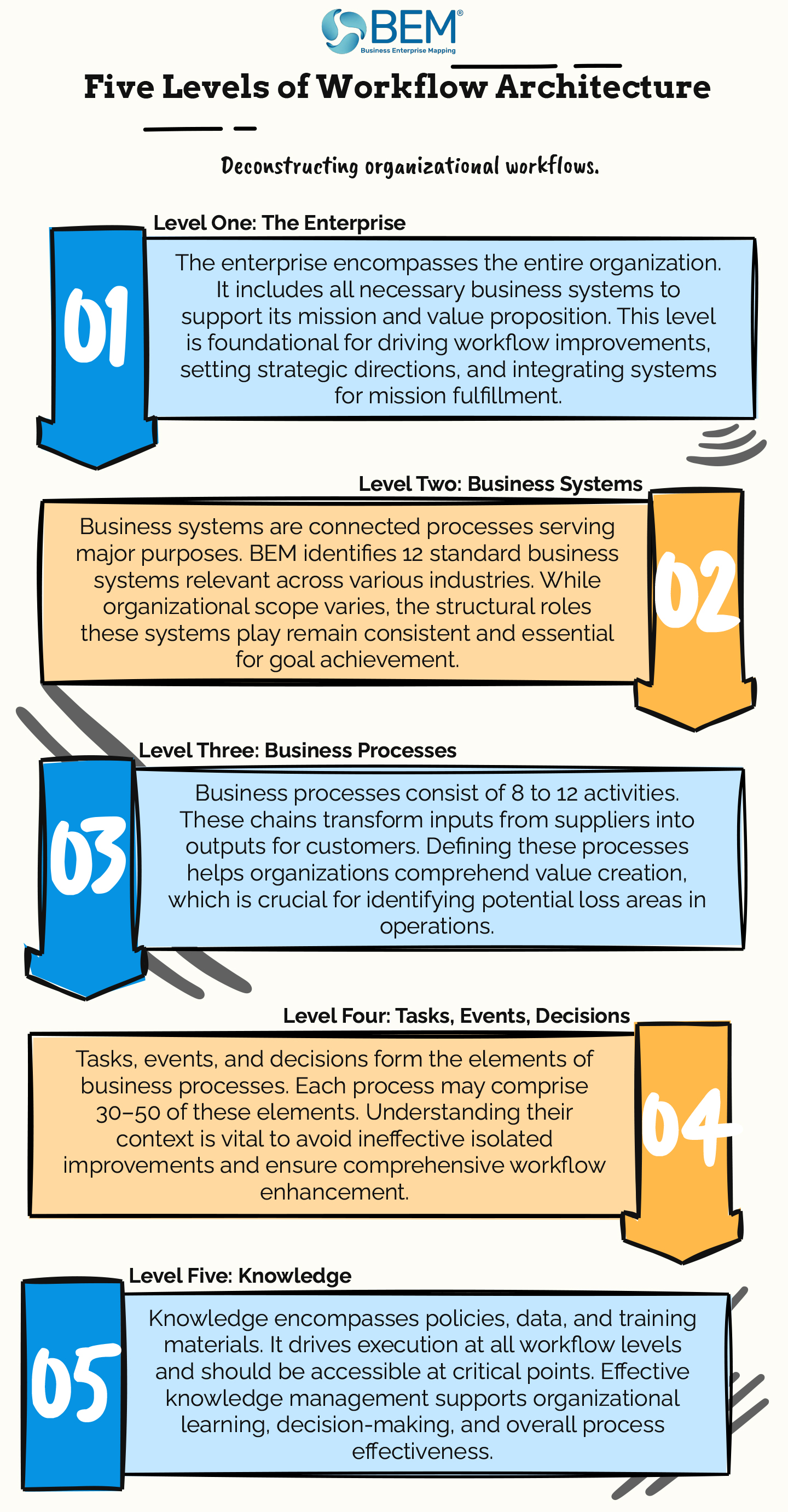One of the common challenges faced by consultants and organizational change experts when engaging with prospective clients is the general lack of clear understanding about workflow architecture. Although most managers appreciate the importance of processes, few can effectively visualize or articulate a coherent workflow architecture for their departments. The typical problem lies in either delving into excessive detail or overlooking significant workflow gaps. To bridge this gap, organizations must begin to view themselves not just as hierarchies or collections of departments, but as systems of deliverables supported by well-structured workflows.
Rethinking Workflow: From Process to Deliverables
At the core of workflow architecture is a shift in perspective—from a process-oriented view to a deliverables-focused one. Each department or business system within an organization exists to fulfill a specific value proposition. To do so, it produces key deliverables through a series of interconnected business processes. These processes, in turn, are composed of tasks, decisions, and events that, when executed effectively, deliver value to internal or external customers.
Designing effective workflow architecture requires a balance of analysis and creativity. Over the years, Business Enterprise Mapping (BEM) has developed a reliable structure for understanding and improving workflows in organizations of all sizes and across industries. This structure provides a consistent way to analyze operations, identify inefficiencies, and drive improvements that enhance organizational value delivery.
The Five Levels of Workflow Architecture
BEM's approach breaks down workflow architecture into five hierarchical levels, each representing a different scope and scale of organizational activity. These levels are: the Enterprise, Business Systems, Business Processes, Tasks/Events/Decisions, and Knowledge.
Level One: The Enterprise
The top level encompasses the entire organization or profit center. This includes all business systems necessary to support the enterprise’s mission and deliver its value proposition. In larger organizations, an enterprise might represent a single profit center or division, while in smaller firms, it might comprise the whole business.
The enterprise serves as the foundation upon which all workflow analysis and improvement efforts are built. It sets the strategic direction, establishes high-level goals, and integrates the different systems that collectively fulfill its mission.
Level Two: Business Systems (12 Standard Systems)
A business system is a set of connected business processes that collectively serve a major organizational purpose. BEM identifies 12 standard business systems that are applicable across industries, regardless of the organization’s size or shape. These systems include:
- Enterprise Management. Oversees strategy, performance metrics, and high-level decision-making like mergers and acquisitions.
- Financial Management. Handles the flow of capital, accounting, and financial reporting.
- Facilities Management. Manages enterprise buildings and workspace environments.
- Equipment Management. Installs and maintains essential equipment.
- Employee Management. Recruits, develops, and retains talent.
- Information Management. Secures and organizes physical and digital information.
- Customer Development. Manages the customer journey from initial contact to long-term relationship.
- Product Development – Develops new products and services and manages existing offerings.
- Supplier Development – Oversees relationships with vendors and service providers.
- Operations Management – Produces and delivers customer value through services or products.
- Service Management – Delivers post-production support such as installation, maintenance, and customer service.
- Improvement Management – Identifies and implements performance enhancements across systems and processes.
Each of these systems plays a vital role in achieving the overall goals of the enterprise. While their scope and complexity may vary by organization, their structural roles remain consistent.
Level Three: Business Processes (8–12 per System)
Each business system typically includes between 8 and 12 distinct business processes. These processes represent chains of activities that take inputs from suppliers, apply transformations, and generate outputs for internal or external customers. They are the core building blocks of value creation.
For example, a Product Development System may include processes like:
- Concept Generation
- Planning
- Design
- Verification
- Validation
- Change Control
- Product Review
- End-of-Life Planning
Surprisingly, many managers are unfamiliar with the specific business processes under their control. This lack of awareness can hinder effective process improvement and performance management. By clearly defining these processes, organizations can better understand how value is created—and where it might be lost.
Level Four: Tasks, Events, and Decisions (30–50 per Process)
At this level, each business process is broken down into individual tasks (actions or jobs), events (like meetings or training sessions), and decisions (e.g., go/no-go checkpoints). Each element contributes to transforming process inputs into outputs. On average, a process might include 30 to 50 of these elements.
A key pitfall in many organizations is attempting to improve task-level problems without understanding the broader process or system context. Isolated improvements often fail or have unintended consequences. Thus, any improvement at the task level should be guided by a clear understanding of its role within the larger workflow.
Level Five: Knowledge
The final level pertains to knowledge—intellectual assets such as policies, procedures, data, records, training materials, patents, and more. Knowledge is the fuel that drives effective execution at all workflow levels. It is accessed and applied through tasks, decisions, and events.
By mapping where and how knowledge is used, organizations can ensure it is available at the point of need. This improves decision-making, reduces errors, and enhances overall process performance. Managing knowledge as a core part of workflow architecture also supports long-term organizational learning and adaptability.

A Better Way to Manage and Improve
The traditional organizational chart focuses on reporting relationships and authority lines. However, a workflow architecture emphasizes work itself—what must be done to create value for customers. This shift is crucial for meaningful improvement.
Rather than randomly fixing individual tasks or trying to optimize small elements in isolation, organizations should approach improvement strategically:
- Improve tasks to fix local issues.
- Improve processes to enhance internal value creation.
- Improve systems to generate transformational enterprise-wide benefits.
This approach aligns organizational structure with customer value and performance goals. By understanding and implementing a standard workflow architecture, organizations gain a consistent method to map their operations, identify inefficiencies, and drive sustainable improvement.
Conclusion
Workflow architecture provides a structured yet flexible way to understand and enhance how work is done across an organization. The five-level model—from enterprise to knowledge—offers a comprehensive framework for rethinking operations, aligning resources, and delivering superior value to customers. By moving beyond organizational charts and focusing on how deliverables are produced, organizations can unlock new levels of efficiency, adaptability, and strategic alignment.

